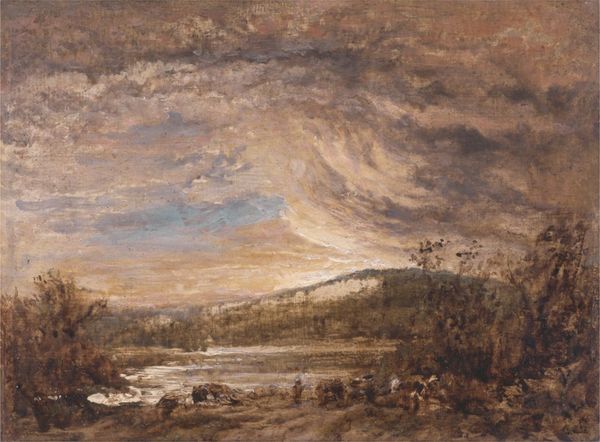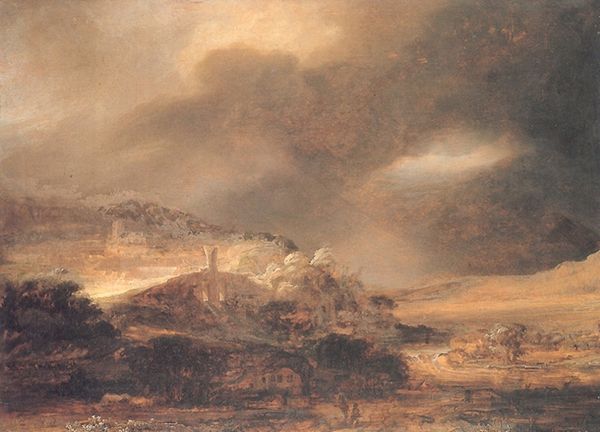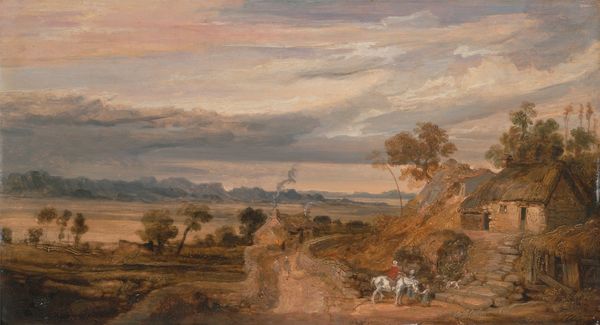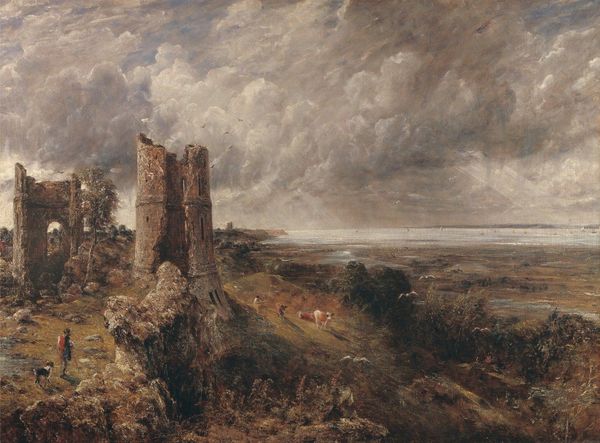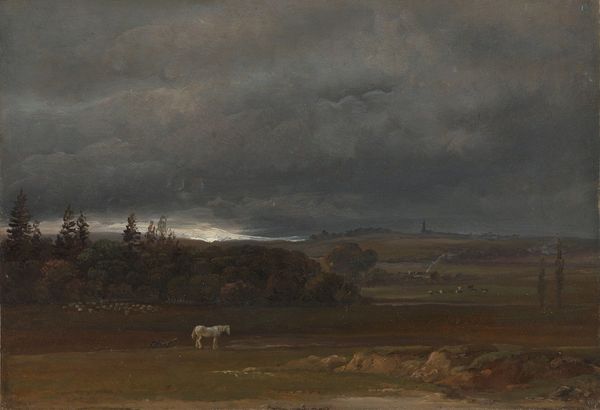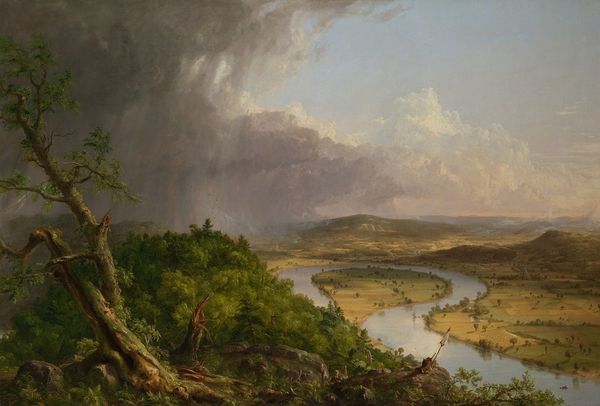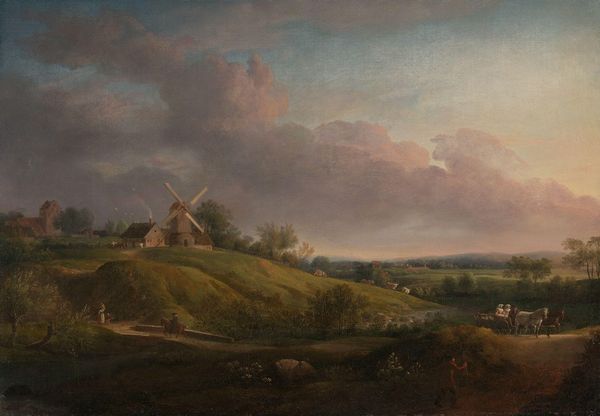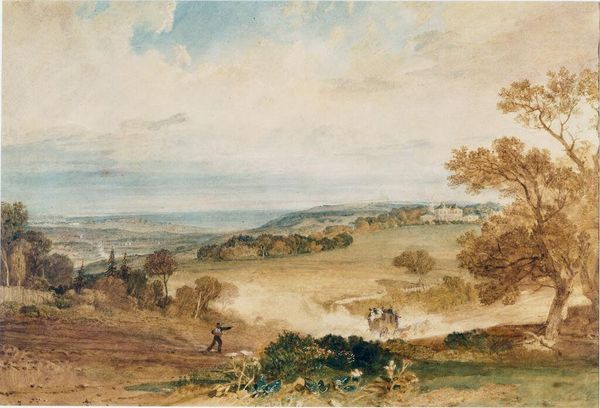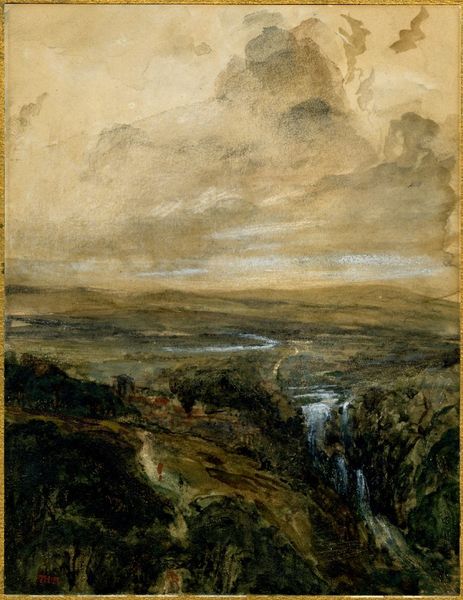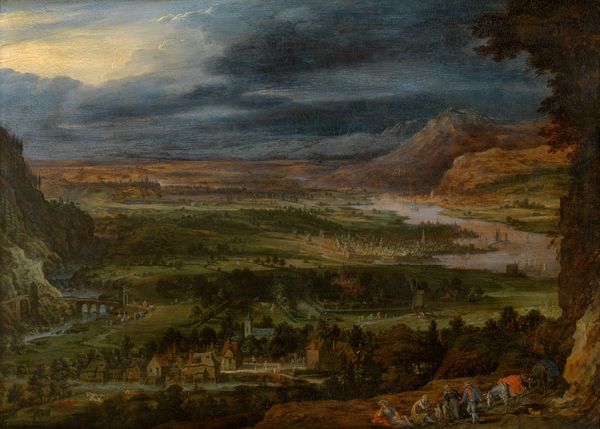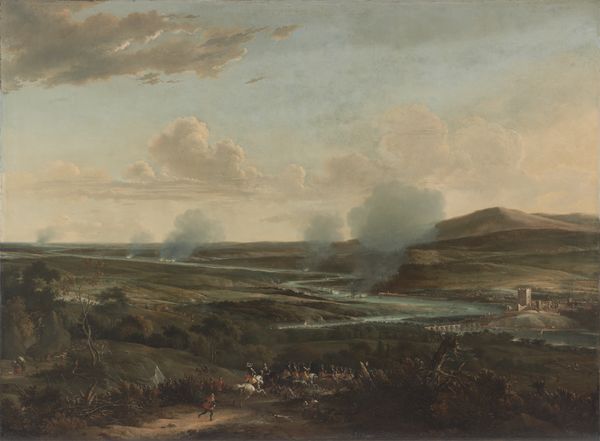
#
abandoned
#
rough brush stroke
#
landscape
#
charcoal drawing
#
possibly oil pastel
#
derelict
#
underpainting
#
fog
#
watercolor
#
mist
#
shadow overcast
Copyright: Public Domain: Artvee
Editor: This is John Constable's "Branch Hill Pond, Hampstead," painted in 1828. The stormy sky really grabs you; the painting feels both expansive and a little ominous. What compositional elements strike you as most important in this piece? Curator: Indeed, the dynamism of the sky is undeniable. Focus, though, on how Constable manipulates tonal values to structure the composition. Note the distinct zones--the dark foreground, the lighter middle ground with the pond reflecting the sky, and then the distant, hazy horizon. Consider how this recession creates a sense of depth and vastness, all orchestrated through carefully considered light and shadow. Editor: So, it's not just the subject matter, but how he uses light to lead the eye? Curator: Precisely. Examine also the materiality: the application of paint, the visible brushstrokes. Does the texture of the paint itself contribute to the overall effect, reinforcing the feeling of movement and atmosphere? How do the more solid areas of the painting play against the evanescent quality of the clouds? Editor: I see how the rough strokes in the foreground create a sense of immediacy and contrast with the smoother treatment of the distant landscape. The underpainting adds depth. Curator: The strategic use of underpainting is intriguing. Could it suggest a certain unfinished quality, perhaps inviting the viewer to actively participate in the construction of the image? Or does it serve primarily to enhance the luminosity of the subsequent layers? Editor: That's a fascinating point about the unfinished quality and viewer participation. I hadn't considered that. I’m finding a new appreciation for the technical choices an artist makes. Curator: Precisely, it is a nuanced interplay, leading us to a deeper understanding of the work itself.
Comments
No comments
Be the first to comment and join the conversation on the ultimate creative platform.

